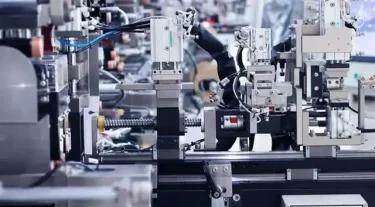
。
# Tape Production Process and Techniques
## Introduction to Tape Manufacturing
Tape manufacturing is a complex process that involves multiple stages to create adhesive products for various applications. From everyday household tapes to industrial-strength adhesive solutions, the production process requires precision and specialized techniques to ensure quality and performance.
## Raw Material Selection
The tape production process begins with careful selection of raw materials:
– Backing materials (paper, plastic films, cloth, or foil)
– Adhesive compounds (rubber-based, acrylic, or silicone)
– Release liners (for pressure-sensitive tapes)
– Additives (tackifiers, stabilizers, and fillers)
## The Tape Production Process
### 1. Backing Material Preparation
The first step involves preparing the backing material. For plastic films, this may include extrusion or calendaring processes to achieve the desired thickness and properties. Paper backings undergo special treatments to enhance strength and moisture resistance.
### 2. Adhesive Application
There are several methods for applying adhesive to the backing material:
– Direct coating: Adhesive is applied directly to the backing
– Transfer coating: Adhesive is first applied to a release liner, then transferred to the backing
– Hot melt coating: Adhesive is applied in molten form and solidifies upon cooling
### 3. Drying and Curing
After application, the adhesive must be dried or cured:
– Solvent-based adhesives require drying ovens to evaporate solvents
– Water-based adhesives need controlled drying environments
– UV or electron beam curing for certain specialty adhesives
### 4. Slitting and Rewinding
The large rolls of coated material are then slit into narrower widths:
– Precision slitting machines cut the material to specified widths
– Automated systems rewind the slit tape onto cores
– Quality control checks ensure consistent width and edge quality
### 5. Packaging
Finished tapes are packaged according to their intended use:
– Consumer tapes receive printed packaging and dispensers
– Industrial tapes may be shipped in bulk rolls
– Specialized tapes undergo additional protective packaging
## Advanced Tape Manufacturing Techniques
Modern tape production incorporates several advanced techniques:
### Multi-layer Coating
Some tapes require multiple adhesive layers or special coatings to achieve desired properties. This may involve:
– Simultaneous multi-layer coating
– Sequential coating with intermediate drying
– Co-extrusion of different materials
### Microstructured Surfaces
Advanced manufacturing creates tapes with microstructured surfaces for:
– Enhanced adhesion
– Directional properties
– Special release characteristics
### Specialty Adhesive Formulations
Manufacturers develop specialized adhesives for:
– Extreme temperature resistance
– Medical applications
– Electronics assembly
– Automotive uses
## Quality Control in Tape Production
Stringent quality control measures ensure tape performance:
– Adhesion testing (peel, tack, and shear tests)
– Thickness and weight measurements
– Visual inspection for defects
– Aging and environmental resistance testing
## Environmental Considerations
Modern tape manufacturing focuses on sustainability:
– Water-based and solvent-free adhesive systems
– Recyclable materials
– Energy-efficient production processes
– Waste reduction initiatives
## Future Trends in Tape Manufacturing
The industry continues to evolve with:
– Smart tapes with embedded sensors
– Biodegradable adhesive formulations
– Nanotechnology-enhanced materials
– Automated, AI-driven production systems
From simple packaging tapes to high-performance industrial solutions, tape manufacturing combines material science with precision engineering to create products that meet diverse needs across countless industries.
Keyword: tape manufacturing